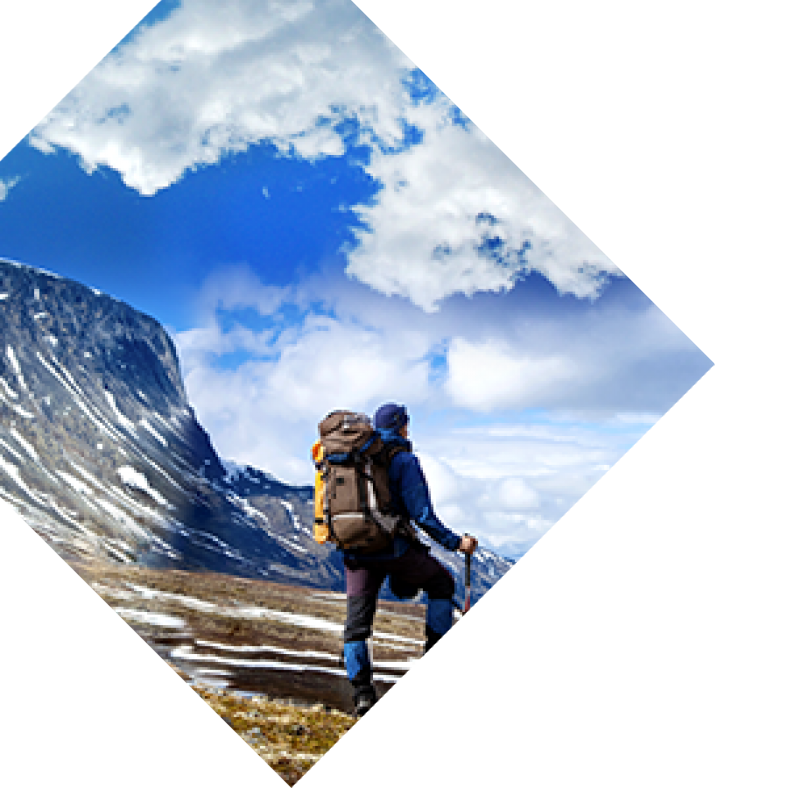When you turn on a sprinkler, your grass gets wet, and you get soaked. It’s bad enough when you see your water bill, but the true cost of your lawn and landscaping may be higher than what's measured in dollars and cents.
Maintaining a lawn consumes a lot of energy, and what you grow outside can determine your energy use inside. It's more than water flowing from the sprinkler; it’s part of your home’s carbon footprint. The good news? It’s one you can shrink.
Fill it Up … Again

It’s no wonder we lavish so much attention on our yards. They provide a sanctuary of beauty and serenity while enhancing the value of our homes. Those benefits don’t come cheap.
According to Yale University, Americans collectively use more than 600 million gallons of gasoline every year just for lawn mowing. Add in the gas used for fertilizing and other yard treatments, and the figure mushrooms to more than 2 billion gallons.
As for water? In some parts of the country, the fuel required to pump it from reservoirs equals the fuel used for mowing.
When you think of the air pollution from all that gasoline use, suddenly your backyard oasis seems a little less green. Making our outdoor lives more eco-friendly means changing the way we landscape, from which grasses and plants adorn our lives to how we keep them thriving.
Finding the Right Mix

With the right attitude and some planning, you can cut your energy consumption and shrink those monthly bills. It means landscaping for energy conservation.
Strategically placed trees and shrubs provide shade and windbreaks that can reduce heating bills by as much as 25 percent. Those same trees can cut cooling bills in half. Native plants should be the cornerstone of any landscaping strategy. They’re already adapted to local climate and soil conditions, making them more energy-efficient.
Landscaping as a way to cut energy consumption is about more than what you plant. What you don’t plant can be just as important.
Try “hardscaping” or incorporating non-living elements into your outdoor design. Bricks, pavers, stone, and wood features break up the carpet of grass and reduce the amount of space that requires energy-consuming maintenance.
Hardscaping also includes man-made components like decks, patios, pergolas, and gazebos. Combining landscaping and hardscaping results in less mowing, fewer trips to fill the gas can, and a reduction of pollutants in the air.
Green Plants and Greywater

Whether we’re pumping it, heating it, cooling it, pressurizing it, or treating it, just about everything we do with water requires us to use a lot of energy. One way to cut back is a no-brainer: landscape with grass, shrubs, and trees that require less water.
Which plants and grasses do well with little or no watering varies from state to state and region to region. State, county, and university extension offices or your local nursery can put you on the right track.
Another option is to go green by going grey. Greywater is what we send down the drain. It comes from our sinks, showers, dishwashers, and washing machines. Why not capture that water and reuse it?
In Israel, 80 percent of the country’s household wastewater gets recycled, with half going for irrigation. Only 7% of U.S. communities recycle wastewater. Those that do report significant savings in the consumption of fuel needed to move water around.
So far, there are no reports of complaints from plants receiving recycled wastewater.
Win-Win
The idea that your outdoor retreat is an energy hog is about as welcome as a thundercloud at a backyard wedding. The right approach to landscaping can keep that cloud at bay, reducing energy consumption and its costs to both your bank account and the environment.
Author: Pat Woodward
Pat Woodard is a freelance writer who takes occasional breaks from high country hikes in Colorado to chase golf balls, rainbow trout, and full-bodied red wines. He's also a longtime radio and television broadcaster, documentary producer, and losing contestant on “Jeopardy.”


